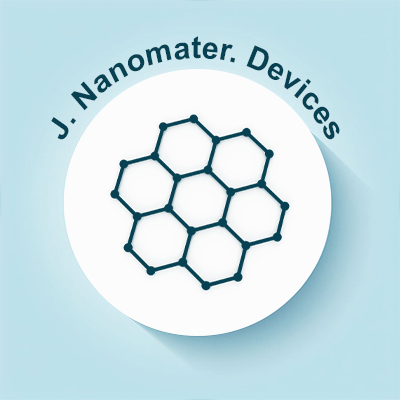
Journal of Nanomaterials and Devices
OPEN ACCESS

OPEN ACCESS
Chemical Vapor Deposition (CVD) is a method where a thin solid layer forms on a surface when gases react near or directly on a heated material. The solid material is produced in the form of a coating, a powder, or individual crystals. By changing the experimental setup—such as the type of substrate, the temperature of the substrate, the composition of the reaction gases, the total pressure, and the gas flow rates—it is possible to produce materials with different characteristics. CVD is one example of a solid-vapor reaction process.The main components of CVD Equipment are Chemical vapor precursor supply system, CVD reactors, the effluent gas handling system. A chemical vapor precursor supply system produces vapor precursors and feeds them into the reactor. The way the CVD reactor is built depends on whether the precursor starts as a solid, liquid, or gas. For solid precursors, the rate at which they turn into vapor depends on how much surface area the solid has and how long the carrier gas stays in contact with it. CVD reactors mainly use two types of designs. The first is a hot wall reactor, where both the substrate and the reactor walls are heated, resulting in a uniform temperature throughout the reaction chamber. The second is a cold wall reactor, where the heating system focuses on heating the wafer while keeping the reactor walls cooler. In this type, the temperature inside the chamber is not uniform. The effluent gas handling system includes a section that neutralizes the exhaust gases, or it uses a vacuum system to create the low pressure needed for the CVD process, which takes place under low pressure or high vacuum conditions during deposition. CVD processes can be divided into different types depending on how the precursor is delivered. Some common types include atmospheric pressure CVD, low-pressure CVD, plasma-enhanced CVD, and metal-organic CVD. In atmospheric pressure CVD, precursor gases flow into the reaction chamber under normal atmospheric pressure. This method is mainly used to deposit relatively thick films. Low-pressure chemical vapor deposition (LPCVD) is a process widely used in semiconductor manufacturing. In this method, precursor gases flow into a reaction chamber kept at low pressure, usually between 1 and 100 mTorr. The process takes place at high temperatures, typically ranging from 500 to 1200°C. Plasma-enhanced CVD (PECVD) is a type of chemical vapor deposition that uses plasma to help drive the gas-phase chemical reactions. Metal-organic chemical vapor deposition (MOCVD) is a type of chemical vapor deposition process used to deposit thin metal films and compound semiconductors like gallium arsenide (GaAs) and indium phosphide (InP). CVD methods are mainly used for coatings that provide wear resistance, corrosion protection, high-temperature resistance, and for making thin films in the microelectronics industry.